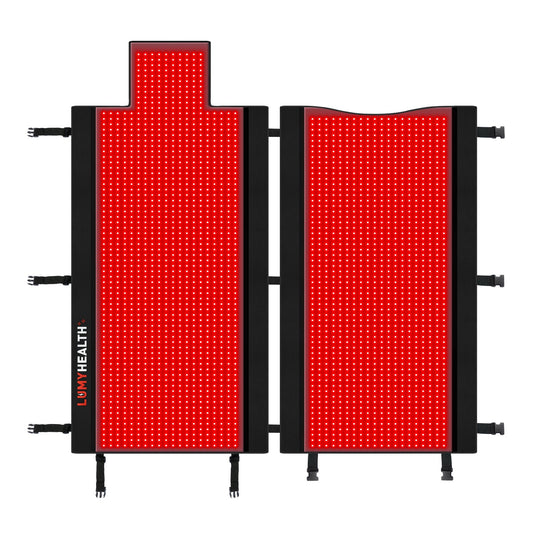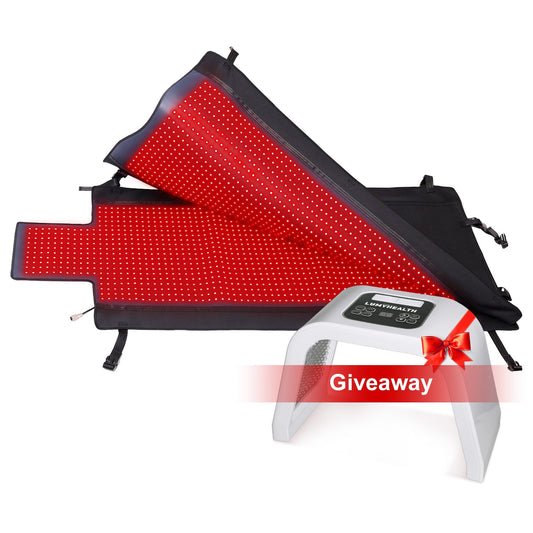Arthritis affects over 58 million adults in the U.S. alone, causing chronic pain, joint stiffness, and reduced mobility. While medications and physical therapy help, many are now turning to red light therapy (RLT) as a natural, non-invasive solution. But does it really work?

This article dives deep into the science of red light therapy for arthritis, sharing real research, trusted data, and product recommendations.
What Is Red Light Therapy?
Red light therapy—also known as low-level laser therapy (LLLT) or photobiomodulation—uses specific wavelengths of light (typically 630–850nm) to stimulate cellular activity. The light penetrates skin and tissues, promoting healing, reducing inflammation, and increasing blood flow.
How Red Light Therapy Helps Arthritis
Red light therapy may not be a miracle cure, but scientific research shows real benefits for arthritis sufferers. It works in three main ways:
- Reduces inflammation: Red light decreases pro-inflammatory cytokines in the joint tissues.
- Increases circulation: It enhances oxygen-rich blood flow to damaged joints.
- Promotes cellular repair: Mitochondria absorb red and near-infrared light, boosting ATP production and cellular regeneration.

Scientific Evidence Supporting RLT for Arthritis
A landmark 2021 study published in Photobiomodulation, Photomedicine, and Laser Surgery evaluated red light therapy for knee osteoarthritis. Results showed:
| Outcome | RLT Group | Control Group |
|---|---|---|
| Pain reduction (VAS scale) | 49% | 16% |
| Joint stiffness reduction | 40% | 10% |
| Improved mobility | 30% | 8% |
📖 Source: Taverna, L. et al. (2021). "Red Light Therapy in Knee Osteoarthritis", PubMed PMID: 33767639
In another meta-analysis (Bjordal et al., 2007) of 13 trials, red light therapy significantly reduced arthritis pain, especially with doses between 6–24 J/cm² and wavelengths around 830nm.
Real-Life Example: Maria’s Journey with LumyHealth
Maria, a 62-year-old woman with rheumatoid arthritis, started using the LumyHealth Red Light Therapy Recovery Bag daily for 20 minutes. After 3 weeks, she reported:
- 50% less joint pain
- Improved sleep quality
- Less morning stiffness
She says, “I was skeptical at first, but it’s now part of my daily wellness ritual.”

Recommended Red Light Devices for Arthritis Relief
If you're considering trying red light therapy, here are some trusted options:
🔴 LumyHealth™ Red Light Therapy Products
- Recovery Bag: Ideal for full-body arthritis relief with over 1500 LEDs.
- Targeted Pads: Wrap-around design for knees, elbows, or wrists.
- FDA-registered, 7 therapeutic wavelengths including 630nm, 660nm, 810nm, and 850nm.
➡️ Shop LumyHealth Red Light Devices
🔴 Mito Red Light
- High-output panels with clinical-grade power.
- Great for home use.
🔴 PlatinumLED BIO Series
- Strong irradiance levels.
- Higher price point, suitable for advanced users.
Are There Any Risks or Side Effects?
Red light therapy is generally safe, with minimal side effects. Some users report temporary redness or warmth at the treatment site. As always, consult your physician—especially if you’re pregnant or have photosensitivity.
How to Use Red Light Therapy for Arthritis
| Area | Device Type | Time per Session | Wavelength Range |
|---|---|---|---|
| Knees | LumyHealth Pad | 15–20 mins | 630–850nm |
| Hands | Hand-held device | 10 mins | 660–850nm |
| Full Body | Lumy Recovery Bag | 20–25 mins | 630–1060nm |
Frequency: 3–5 times per week for best results.

Final Thoughts: Is It Worth Trying?
If you suffer from arthritis and want a drug-free option, red light therapy is backed by solid science and real results. Red light recovery bag offer an easy way to bring clinical-grade therapy into your home.
With little risk and growing clinical validation, it’s worth trying for anyone seeking joint pain relief, naturally.
References
- Taverna, L. et al. (2021). Red Light Therapy in Knee Osteoarthritis, Photobiomodulation, Photomedicine, and Laser Surgery.
- Bjordal, J.M., et al. (2007). "Low level laser therapy for osteoarthritis: meta-analysis of randomized controlled trials." BMJ.
- Hamblin, M.R. (2016). "Mechanisms and applications of the anti-inflammatory effects of photobiomodulation." AIMS Biophysics.





























